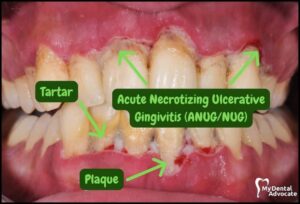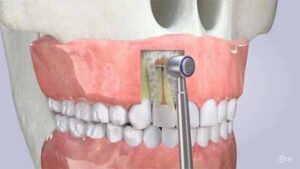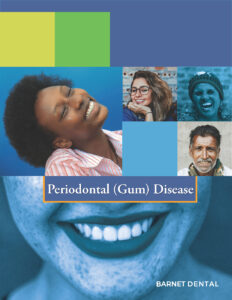New York Endodontic Associates
Contact
Hours
<ul id=”hours” style=”transition: height .3s ease;”>
<li>Monday: 9:00am – 9:00pm</li>
<li>Tuesday: 9:00am – 6:00pm</li>
<li>Wednesday: 9:00am – 9:00pm</li>
<li>Thursday: 9:00am – 9:00pm</li>
<li>Friday: 9:00am – 5:00pm</li>
</ul>
New York Endodontic Associates, located in the bustling city of New York, NY, is a leading practice specializing in endodontic care. The practice is dedicated to providing exceptional root canal therapy and other endodontic treatments in a comfortable and compassionate environment. Led by a team of experienced endodontists, New York Endodontic Associates offers state-of-the-art procedures to save natural teeth and relieve dental pain.
Endodontic Services
Root Canal Therapy
- Expert Diagnosis: Accurate diagnosis of dental pain and identification of the cause to determine the need for root canal treatment.
- Precision Treatment: State-of-the-art techniques and equipment to perform root canal therapy with precision and efficiency.
- Gentle Care: Compassionate approach to alleviate dental anxiety and ensure a comfortable experience for every patient.
Endodontic Surgery
- Apicoectomy: Surgical procedure to remove infected tissue and seal the root tip, often performed when conventional root canal therapy is not sufficient.
- Root Canal Retreatment: Revision of a previous root canal treatment to address persistent infection or other complications.
Advanced Procedures
Microscopic Endodontics
- High-Powered Microscopes: Utilization of advanced microscopes for enhanced visualization and precision during root canal procedures.
- Ultrasonic Instrumentation: Gentle and efficient removal of infected tissue using ultrasonic technology, minimizing trauma to surrounding tissues.
Regenerative Endodontics
- Pulpotomy: Partial removal of damaged pulp tissue followed by application of regenerative materials to promote healing and preserve tooth vitality.
- Revascularization: Stimulating the growth of new blood vessels and tissues inside the tooth to revitalize damaged or infected pulp.
Patient Care
Comprehensive Consultations
- Thorough Examinations: Detailed evaluations and discussions to educate patients about their treatment options and address any concerns.
- Personalized Treatment Plans: Customized treatment plans tailored to each patient’s unique oral health needs and goals.
Comfort and Support
- Relaxing Environment: A calming atmosphere designed to help patients feel at ease during their visits.
- Pain Management: Utilization of advanced anesthesia techniques to minimize discomfort during procedures.
Necrotizing Ulcerative Gingivitis (NUG)
Necrotizing ulcerative gingivitis (NUG), also known as trench mouth, is a severe form of gingivitis characterized by painful, ulcerative lesions and necrosis (tissue death) of the gingival tissues. It is most commonly associated with bacterial infections, particularly the overgrowth of anaerobic bacteria such as Fusobacterium, Prevotella, and Treponema species, often in the setting of poor oral hygiene and other predisposing factors.
Here are some key points about necrotizing ulcerative gingivitis (NUG):
- Causes and Risk Factors: NUG is typically caused by an imbalance in the oral microbial flora, leading to the overgrowth of pathogenic bacteria and a breakdown of the protective mechanisms of the gingival tissues. Predisposing factors for NUG include poor oral hygiene, smoking, stress, malnutrition, immunosuppression, and systemic conditions such as HIV/AIDS. These factors create an environment conducive to bacterial proliferation and the development of NUG.
- Clinical Presentation: Necrotizing ulcerative gingivitis typically presents with the following signs and symptoms:
- Painful, ulcerative lesions of the gingiva, often with a punched-out appearance and grayish or yellowish pseudomembranes covering the ulcerated areas.
- Spontaneous bleeding from the gums, particularly upon gentle probing or brushing of the teeth.
- Halitosis (bad breath) due to the presence of necrotic tissue and bacterial overgrowth.
- Swollen and tender gingival tissues, often with a fiery red or purplish hue.
- Regional lymphadenopathy (enlarged lymph nodes) in severe cases, indicating systemic involvement.
- Diagnosis: Diagnosis of necrotizing ulcerative gingivitis is based on clinical examination and assessment of the characteristic signs and symptoms. In some cases, laboratory tests such as microbial culture or polymerase chain reaction (PCR) analysis may be performed to identify the causative bacteria and guide treatment decisions. Differential diagnosis may include other forms of gingivitis, periodontitis, or oral mucosal diseases with similar clinical features.
- Treatment: Treatment of necrotizing ulcerative gingivitis aims to control infection, reduce inflammation, and promote healing of the affected gingival tissues. Management options may include:
- Mechanical debridement of necrotic tissue and plaque biofilm from the gingival surfaces, often performed using ultrasonic or hand instruments under local anesthesia.
- Antimicrobial therapy with systemic antibiotics such as metronidazole, amoxicillin/clavulanate, or doxycycline to target the underlying bacterial infection.
- Topical antiseptic mouthwashes or oral rinses containing chlorhexidine or hydrogen peroxide to reduce bacterial load and promote gingival healing.
- Pain management with analgesics or nonsteroidal anti-inflammatory drugs (NSAIDs) to alleviate discomfort and facilitate oral hygiene practices.
- Adjunctive measures such as nutritional counseling, stress reduction techniques, and smoking cessation counseling to address predisposing factors and promote overall oral health.
- Follow-up and Prevention: Patients with necrotizing ulcerative gingivitis should be closely monitored for resolution of symptoms and signs of disease recurrence. Follow-up dental visits may include professional cleaning, oral hygiene instruction, and reinforcement of preventive measures to maintain oral health and prevent recurrence of NUG. Good oral hygiene practices, regular dental check-ups, and avoidance of risk factors such as smoking are essential for the prevention of necrotizing ulcerative gingivitis.
In summary, necrotizing ulcerative gingivitis is a severe form of gingivitis characterized by painful, ulcerative lesions and necrosis of the gingival tissues. It is caused by bacterial infections, often in the setting of poor oral hygiene and other predisposing factors. Prompt diagnosis and appropriate treatment are essential for controlling infection, reducing inflammation, and promoting healing of the affected gingival tissues in individuals with necrotizing ulcerative gingivitis.
Apicoectomy
Apicoectomy, also known as root-end resection or root-end surgery, is a dental surgical procedure performed to remove the tip of the tooth's root (apex) and any infected tissue surrounding it. This procedure is typically indicated when a conventional root canal treatment has failed to resolve persistent infection or inflammation in the root canal system of a tooth.
Here's an overview of the apicoectomy procedure:
- Indications:
- Apicoectomy is indicated when a tooth that has undergone root canal treatment continues to exhibit signs of infection, inflammation, or persistent symptoms such as pain, swelling, or drainage.
- Common reasons for apicoectomy include the presence of infection or inflammation in the root canal system that cannot be resolved with conventional root canal therapy, persistent periapical lesions (abscesses), or the presence of accessory canals or anatomical complexities that cannot be adequately treated with nonsurgical means.
- Preoperative Assessment:
- Before performing an apicoectomy, the dentist or endodontist will conduct a comprehensive evaluation of the affected tooth, including clinical examination, radiographic assessment (X-rays), and possibly additional diagnostic tests such as pulp vitality testing or cone-beam computed tomography (CBCT).
- The goal of the preoperative assessment is to identify the cause of the persistent infection or inflammation and determine the suitability of apicoectomy as a treatment option.
- Procedure:
- Anesthesia: Local anesthesia is administered to numb the area surrounding the affected tooth and ensure the patient's comfort during the procedure.
- Tooth isolation: The tooth and surrounding area are isolated using a dental dam or other protective barrier to maintain a clean and sterile field.
- Access: The dentist or endodontist makes a small incision in the gum tissue near the apex of the tooth to access the underlying bone and root tip.
- Root-end resection: Using specialized dental instruments, the dentist or endodontist removes the tip of the tooth's root (apex) along with any infected or inflamed tissue.
- Root-end preparation: The root canal(s) of the tooth may be cleaned, shaped, and filled with a biocompatible material to seal the root canal space and prevent recontamination or reinfection.
- Root-end sealing: A small filling material (such as gutta-percha) is placed in the prepared root canal space, and a root-end filling material (such as mineral trioxide aggregate or dental cement) is used to seal the root-end cavity.
- Suture placement: The gum tissue is repositioned and sutured back into place to facilitate healing.
- Postoperative Care:
- Following the procedure, the patient may experience some discomfort, swelling, or bruising, which can be managed with pain medication and cold compresses applied to the outside of the cheek.
- Patients are advised to follow postoperative instructions provided by the dentist or endodontist, including dietary restrictions, oral hygiene practices, and any prescribed medications.
- Regular follow-up appointments are scheduled to monitor healing, assess the success of the procedure, and address any concerns or complications.
- Prognosis:
- The success of apicoectomy depends on various factors, including the extent of infection or inflammation, the quality of the root-end preparation and sealing, and the patient's oral hygiene and compliance with postoperative care instructions.
- With proper care and maintenance, apicoectomy can provide a favorable outcome, relieving symptoms and preserving the affected tooth for long-term function and aesthetics.
In summary, apicoectomy is a dental surgical procedure performed to remove the tip of a tooth's root (apex) and any infected tissue surrounding it, typically indicated when conventional root canal treatment has failed to resolve persistent infection or inflammation. If you have a tooth that may require apicoectomy or if you have any questions about the procedure, it's important to consult with your dentist or endodontist for a thorough evaluation and personalized treatment plan.





